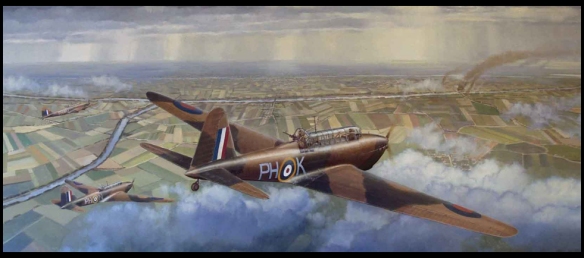
If only the French High Command had realized what was happening, the huge concentration of German armour moving through the tangled roads of the Ardennes would have offered an easy target to Allied bombers. As it was, most bombers were being dispatched to northern Belgium to impede the German advance there, while Blanchard moved into position. During these raids, which concentrated especially on the bridges at Maastricht, casualties were very high. The British, who had begun the campaign with 135 bombers in France, had only 72 still in service by the end of 12 May. On the previous day, French air reconnaissance noted ‘considerable motorized and armoured forces on the move’ in the Ardennes, and observed that the Germans were carrying a lot of bridging equipment. On the afternoon of 12 May Georges therefore ordered the main priority for aerial bombing support to be switched from the First Army (in Belgium) to the Second (on the Meuse). General Billotte, still fixated on events in central Belgium, declared that he was ‘astonished’ by this, and, ignoring Georges’s instructions, ordered that two-thirds of air support should go to the First Army and one-third to the Second. Huntziger himself, complacent as ever, had not requested any extra bomber support for his sector.
One remarkable feature of the battle had been the almost complete absence of the Allies in the air (apart from two bombing raids around Houx). This was due partly, of course, to their inferiority in the air, but also to the fact that they had concentrated their limited air resources in the wrong place—in central and northern Belgium. On 13 May, Air Chief Marshal Barratt, in charge of the British air force in France, had felt it necessary to rest his forces for a day after the heavy losses they had incurred in Holland and Belgium. Once the Allies had realized their mistake, they did send planes to Sedan at dawn on 14 May to attack the German bridges over the river. About 152 bombers and 250 fighters concentrated over Sedan, suffering 11 per cent losses. The small size of the target made their task difficult, and the effectiveness of the operation was reduced by sending in the planes in small groups of 10 to 20. Of 71 British bombers only 41 returned. According to the official RAF history, ‘[N]o higher rate of loss in an operation has ever been experienced by the Royal Air Force.’ In the afternoon, for lack of any other bombers, the French were reduced to sending in obsolete Amiot 43 bombers, which were entirely unsuitable for operations of this type and also suffered heavy casualties. On 14 May there was nothing the air force could do to retrieve the situation: all would depend on the armoured reserves.